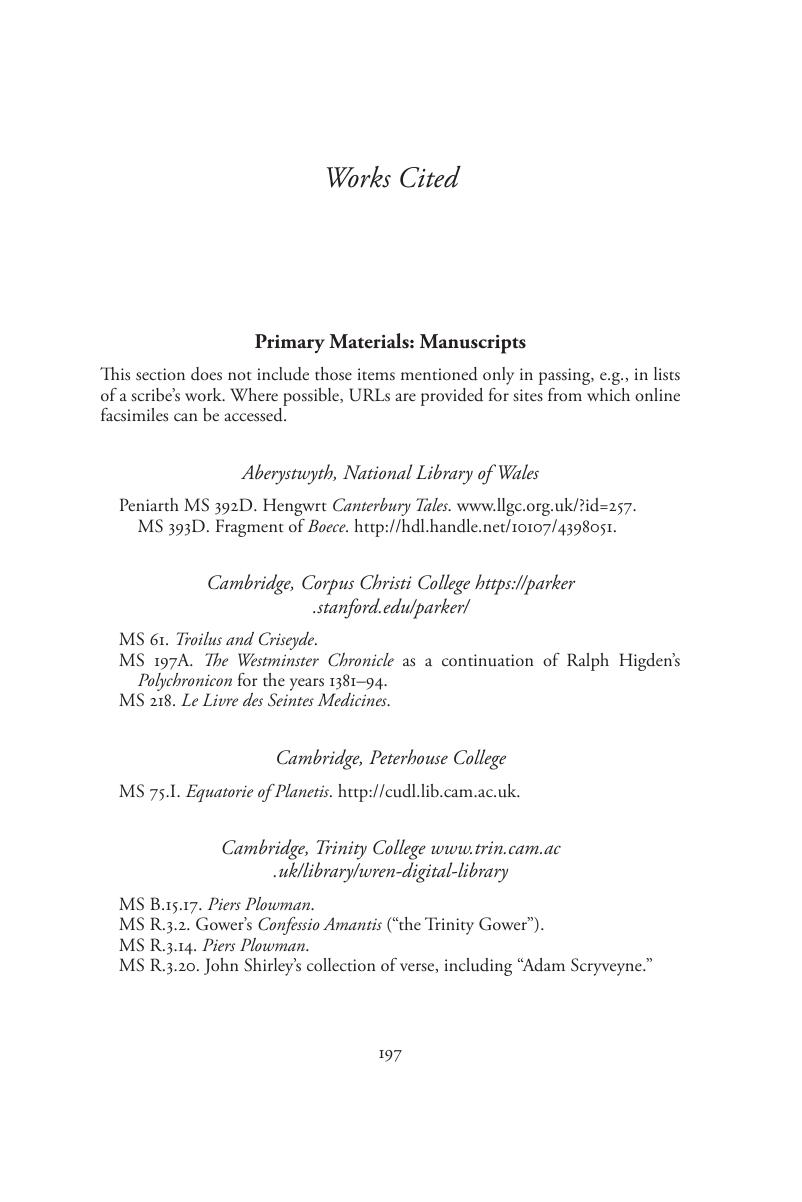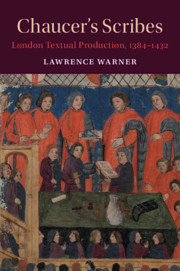Book contents
- Chaucer’s Scribes
- Cambridge Studies in Medieval Literature
- Chaucer’s Scribes
- Copyright page
- Dedication
- Contents
- Figures
- Acknowledgments
- Abbreviations
- Introduction
- Chapter 1 Adam
- Chapter 2 The Pynkhurst Canon
- Chapter 3 Pynkhurst’s London English and the Dilemma of Copy-Text
- Chapter 4 Looking for the Scribe of Huntington Hm 114
- Chapter 5 The Guildhall Clerks
- Chapter 6 Hoccleve’s Hengwrt, Hoccleve’s Holographs
- Conclusion
- Notes
- Works Cited
- Index
- Cambridge Studies in Medieval Literature
- References
Works Cited
Published online by Cambridge University Press: 24 August 2018
- Chaucer’s Scribes
- Cambridge Studies in Medieval Literature
- Chaucer’s Scribes
- Copyright page
- Dedication
- Contents
- Figures
- Acknowledgments
- Abbreviations
- Introduction
- Chapter 1 Adam
- Chapter 2 The Pynkhurst Canon
- Chapter 3 Pynkhurst’s London English and the Dilemma of Copy-Text
- Chapter 4 Looking for the Scribe of Huntington Hm 114
- Chapter 5 The Guildhall Clerks
- Chapter 6 Hoccleve’s Hengwrt, Hoccleve’s Holographs
- Conclusion
- Notes
- Works Cited
- Index
- Cambridge Studies in Medieval Literature
- References
Summary

- Type
- Chapter
- Information
- Chaucer's ScribesLondon Textual Production, 1384–1432, pp. 197 - 215Publisher: Cambridge University PressPrint publication year: 2018
References
Primary Sources
Secondary Sources
- 1
- Cited by



